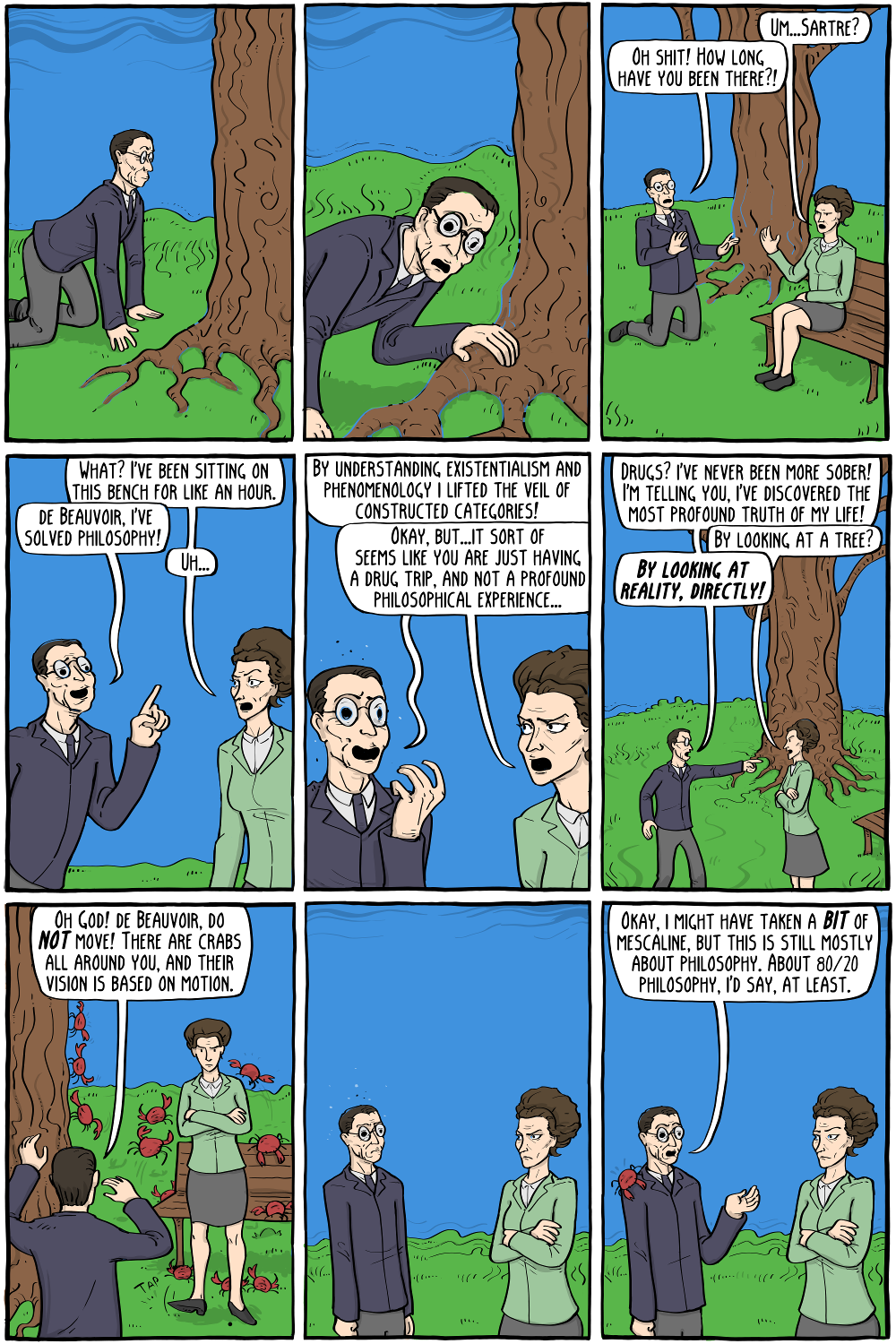
In one of the most famous scenes in Sartre's most famous novel, Nausea, the main character Antoine Roquentin has a sort of existential crisis, and comes upon a chestnut tree and sees the root of the tree "as it really is", that is to say, without his mind imposing the structure of a "chestnut tree" upon it. One might be tempted, of course, to read this as though it was a drug trip, but it is presented in a way like the character just thought his way into another mode of phenomenological experience.
Sartre himself took a number of drugs in his life to experiment with perception, most notably Mescaline. He apparently saw hallucinated crabs for years after he took the drug, even when he was sober, which isn't so much known as a side effect of the drug, so we might imagine that Sartre took other hallucinogens aside from the Mescaline. Well, either that or he was just so smart that he saw reality, like, as it is really is or something.
Permanent Link to this Comic: https://existentialcomics.com/comic/244
Support the comic on Patreon!










